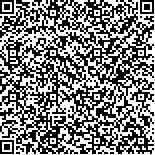| 引用本文: | 邱玉宝,王星星,阮永俭,解鹏飞,钟钰,杨素萍.基于星载被动微波遥感的青藏高原湖冰物候监测方法.湖泊科学,2018,30(5):1438-1449. DOI:10.18307/2018.0525 |
| QIU Yubao,WANG Xingxing,RUAN Yongjian,XIE Pengfei,ZHONG Yu,YANG Suping.Passive microwave remote sensing of lake freeze-thawing over Qinghai-Tibet Plateau. J. Lake Sci.2018,30(5):1438-1449. DOI:10.18307/2018.0525 |
|
| 本文已被:浏览 6999次 下载 4194次 |

码上扫一扫! |
|
|
| 基于星载被动微波遥感的青藏高原湖冰物候监测方法 |
|
邱玉宝1, 王星星1,2, 阮永俭1,3, 解鹏飞1, 钟钰1,2, 杨素萍1
|
|
1.中国科学院遥感与数字地球研究所数字地球重点实验室, 北京 100094;2.江西理工大学建筑与测绘工程学院, 赣州 341000;3.中山大学地理科学与规划学院, 广州 510000
|
|
| 摘要: |
| 湖冰物候影响着区域及全球气候,是全球变化的敏感因子,青藏高原湖泊众多,冻融现场监测数据缺乏,而微波具有对冰水相变敏感、时间分辨率高、历史存档数据长等特点,这对于长时间序列湖冰物候研究具有重要意义.然而,被动微波遥感空间分辨率低、湖泊亮温的精准定位难.论文通过获取AMSR-E/Aqua和AMSR-2/Gcom-W1的亮温数据,构建了基于轨道亮温数据的阈值判别法,通过对青藏高原不同区域和不同大小的青海湖、色林错、哈拉湖以及阿其克库勒湖进行测试研究:与青海湖现场观测对比,湖泊完全冻结日期与开始融化日期最大误差小于3天;与无云光学遥感判别结果相比,4个湖泊的冻融参数误差为2~4天.结果表明,被动微波轨道亮温数据可实现青藏高原地区亚像元级中大型湖泊冻融信息的获取,历史卫星资料可为湖冰物候的监测提供重要的支撑. |
| 关键词: 湖冰物候监测 星载被动微波遥感 青藏高原 阈值法 |
| DOI:10.18307/2018.0525 |
| 分类号: |
| 基金项目:中国科学院A类战略性先导科技专项(XDA19070201)、中国科学院国际合作局对外合作重点项目(131C11KYSB20160061)和国家自然科学基金项目(41371351)联合资助. |
|
| Passive microwave remote sensing of lake freeze-thawing over Qinghai-Tibet Plateau |
|
QIU Yubao1, WANG Xingxing1,2, RUAN Yongjian1,3, XIE Pengfei1, ZHONG Yu1,2, YANG Suping1
|
|
1.Laboratory of Digital Earth Science, Institute of Remote Sensing and Digital Earth, Chinese Academy of Sciences, Beijing 100094, P. R. China;2.School of Architectural and Surveying and Mapping Engineering, Jiangxi University of Science and Technology, Ganzhou 341000, P. R. China;3.School of Geography and Planning, Sun Yat-Sen University, Guangzhou 510000, P. R. China
|
| Abstract: |
| The freezing of the lake is one of the sensitive factors of global climate change, which affects regional and global climate. There are many lakes in the Qinghai-Tibet Plateau, however, the freeze-thawing ground monitoring data is very seriously lacking. The microwave has the characteristics of water phase sensitivity, high temporal resolution and long historical data, which are of great value for the monitoring of long-term lake ice phenology. However, the passive microwave has a low spatial resolution, and the brightness temperature of the lake has the challenge of positioning accuracy. The paper obtained the orbital brightness temperature data of AMSR-E/2 from the Aqua and Gcom-W1 satellite, and constructed the method of threshold freeze-thawing, which were based on the orbital brightness temperature data. These two methods were tested in different regions and sizes of lakes in the Qinghai-Tibet Plateau (Lake Qinghai, Siling Co, Lake Hala and Lake Aqikekule).The results showed that the maximum error of the freeze-up end date and the break-up start date were less than 3 days in comparison with the ground observation of Lake Qinghai, and compared with the results of the non-cloud optical remote sensing test, the parameters of the freeze-thawing parameters of the four lakes were 2-4 days. The study suggests that based on the brightness temperature data of passive microwave orbit, it is possible to achieve the acquisition of freeze-thawing information of sub-pixel large and medium-sized lakes in the Qinghai-Tibet Plateau, and using historical satellite data can provide an important reference for the monitoring of lake ice. |
| Key words: Lake ice phenology passive microwave remote sensing Qinghai-Tibet Plateau threshold method |